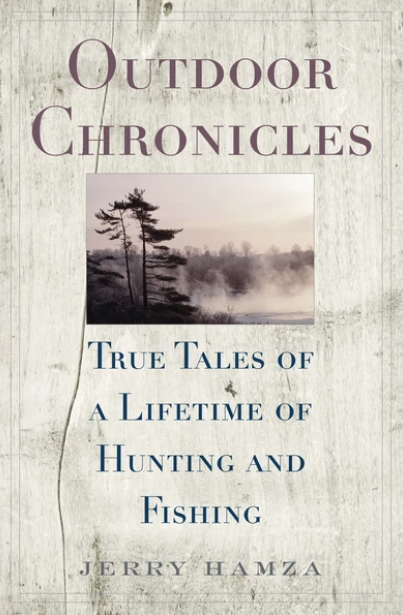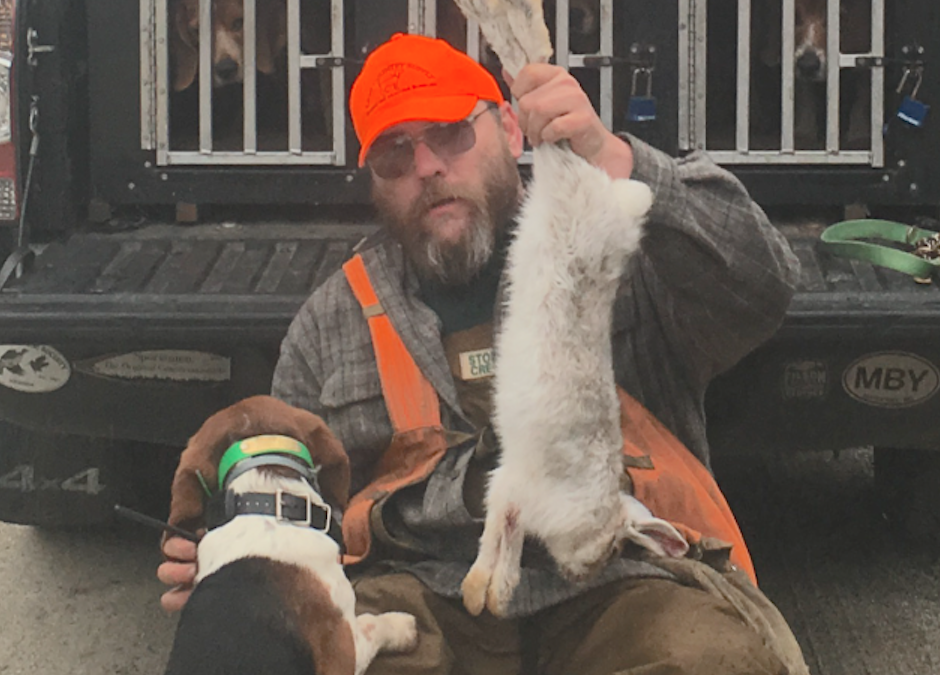Social media allows groups of far-flung, like-minded individuals to connect with each other, which led me to hare hunting New Hampshire with new friends.
Social media has its quirks. You can learn plenty of things. For instance, a mother, needy for affirmation, might tell you that she fed the kids supper and did not have enough elbow macaroni for the mac and cheese, so she added some noodles that were shaped differently. This, I suppose, might be a life-altering bit of knowledge to some readers.
Additionally, you can find out how many people play a game called Candy Crush, as they will ask you to play every day. (I like to crush peanut M&M candy…) I haven’t received a postcard in ages; instead, you just look at the selfies that people post from wherever they travel.
All of that being said, the great thing about social media is that it allows small groups of far-flung but like-minded individuals to connect with each other. I am a beagler, and I run dogs almost every day. All of those hours of training and conditioning culminate with hunting season. I have gotten to know many friends who are passionate houndsmen just from the computer.
So, I went north to New Hampshire to meet Kris. I had never talked to him in “real life,” but we have exchanged views and opinions on hounds for a few years now. He is a power lifter that owns a garage and often doesn’t use an engine hoist. Kris invited me to hunt, and I brought along Jason, who has hunted with me on several occasions.
We all met at Kris’s camp. Well, it took a while, as there is no cell phone reception there, and my directions got me close. I cautiously approached a camp door and knocked. I told them where I was trying to go.
“The guy with the beagles?” the gentleman asked.
“Yes!” I was thrilled that I must be close.
I was only a few hundred yards away, and I soon meandered up the long driveway and was greeted by a beagle. Jason, on the other hand, is from Cape Cod and didn’t ask for directions. He drove right to the house—after being lost for a couple hours.
We planned the next day’s hunt, which would occur a few miles from Maine, and not many more miles from Quebec. Not all beagles are similar, so Jason and I had concerns that our dogs would not keep up with our host’s hounds.
“Don’t worry,” Kris said. “I put ninety miles on the dogs this week to take off some of the eagerness. And I will run my slowest dogs. Also, we will be in thick cover, so no dog can go real fast.”
That was a really kind gesture from Kris, one that a non-beagler may not recognize. While I pursue some hare in my home state of Pennsylvania, they are rare. For the most part, my dogs run cottontails.
The difference is noteworthy. A cottontail will twist and turn and change directions frequently as it leads the pack on a circle that rarely measures more than 300 yards in diameter. A hare, very often, will run big circles (more than a mile in diameter sometimes) with much less tricks. A hare almost never goes into a groundhog hole, a favorite escape tactic of cottontails. Oh, and the snowshoe hare is much bigger and leaves much more scent.
My dogs run faster on hare, but they are bred to also gear down for a tricky cottontail on a warm afternoon in poor scent. Kris ensured that my dogs would be contributing in the hunt, which was a real gift from a person I had not yet met.

A good day’s bag of New Hampshire hare
We left the camp early for a store to get breakfast sandwiches. Jason and I bought our out-of-state small game licenses. Kris had a friend named Burnzy that joined us, and Kris’s wife, Jackie, came along to help handle hounds. She is a whiz on the GPS tracking collars!
We entered the woods with four guns and ten beagles. The chasing was constant, and we had a few splits where one pack was below us and another was over the hill where we could not hear it or even track the hounds, since the collars lost communication in the rugged hills and dense forest. After long chases and 16 miles on the hounds everyone had shot a hare but me.
Then a hare that had turned white already ran straight at me! I fired twice from my side-by-side Lefever and missed. The hare took off, and it sounded like it was headed for the Canadian border. An hour later it had not returned.
“No problem,” Burnzy said as he looked at the GPS. “They are circling it by that pond.”
The pond was nearly a mile away, and the walk was through dense North Woods conifers and swamp. Tree stumps from previous timbering ambushed your legs, which was pleasant compared to the large rocks that were left by retreating glaciers from the last ice age.
“Did you bring steel shot like I said?” Kris asked me.
“Yeah, why?”
“Cuz that hare is in a spot that requires two articles of orange clothing and steel shot. Follow me.”
Jason and I climbed into my truck; Burnzy, Kris, and Jackie got into another, and we drove several miles to go 1,500 yards. I got my 12 gauge out of the takedown case and put the side-by-side Ugartechea together. The dogs screamed past us.
“Stay here and wait for it. It is headed for the highway,” Kris said.
Off he sped to stop traffic if necessary for the dogs. The hare circled close to the hardtop road and came screaming back at me. I dropped it with one shot, nearly a mile from where I missed it. New Hampshire is the eighth different state I have successfully hunted over beagles, and it is the fifth state where I have killed the big running snowshoe hare.
There is a lot of nonsense on social media, but it is a place that allows you to turn “friends” into true hunting partners.
 This book is a collection of outdoor stories wrapped in the human condition. They were written with an eye toward honesty and cynicism. They will make you laugh out loud, and you will want to carry them with you wherever you go. If this book goes missing, it’s a sure thing that, when you do find it, it will be in the possession of a member of your household, regardless of their interest in casting a fly. The stories cover the gamut from a fishing trip to northern Canada to a little stream that was actually better than remembered, to how the baby boomers almost trampled a sport to death, to a solitary trek along railroad tracks during a cold, dark and dreary February and many more. Buy Now
This book is a collection of outdoor stories wrapped in the human condition. They were written with an eye toward honesty and cynicism. They will make you laugh out loud, and you will want to carry them with you wherever you go. If this book goes missing, it’s a sure thing that, when you do find it, it will be in the possession of a member of your household, regardless of their interest in casting a fly. The stories cover the gamut from a fishing trip to northern Canada to a little stream that was actually better than remembered, to how the baby boomers almost trampled a sport to death, to a solitary trek along railroad tracks during a cold, dark and dreary February and many more. Buy Now




